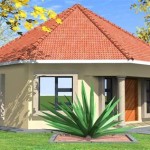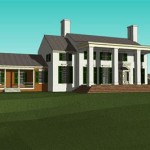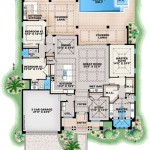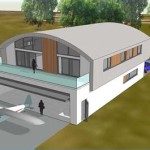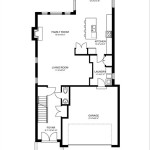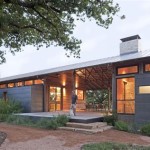Navigating the Challenges and Opportunities of Odd-Shaped Floor Plans
Odd-shaped floor plans, characterized by angles, curves, and irregular dimensions, present a unique set of challenges and opportunities in interior design and space utilization. These floor plans diverge from the conventional rectangular or square layouts and can be found in a variety of architectural styles, from historic buildings adapting to existing foundations to modern designs pushing the boundaries of spatial expression. Understanding the nuances of these floor plans is crucial for homeowners, renters, and designers alike, as it directly impacts furniture placement, traffic flow, and overall functionality of the living space.
The prevalence of odd-shaped floor plans is increasing, driven by factors such as urban density, adaptive reuse of existing structures, and a growing demand for distinctive architectural designs. Apartment buildings converted from warehouses, homes built into hillsides, and renovations designed to optimize space utilization often result in layouts that deviate from the norm. These unconventional spaces, while potentially visually appealing, often necessitate creative solutions to address inherent limitations and maximize their potential.
Addressing the Challenges of Space Planning and Furniture Arrangement
One of the primary challenges posed by odd-shaped floor plans is efficient space planning. Standard furniture configurations designed for rectangular rooms often fail to fit comfortably or functionally within irregular spaces. Awkward angles can create unusable corners, while curved walls may limit options for furniture placement and restrict the flow of movement. The key to successful space planning in these environments lies in a careful assessment of the floor plan, identifying focal points, and understanding the natural traffic patterns. Prioritizing functionality and considering the specific needs of the inhabitants are vital in ensuring a comfortable and practical living environment.
Furniture selection plays a critical role in optimizing odd-shaped floor plans. Instead of forcing standard furniture pieces into awkward spaces, consider custom-built furniture or modular designs that can adapt to the unique contours of the room. Sectional sofas that can be configured to fit along angled walls, custom shelving units designed to fill irregular niches, and round tables that soften sharp corners can all contribute to a more harmonious and functional space. Choosing furniture with clean lines and avoiding bulky pieces helps maintain a sense of openness and prevents the space from feeling cluttered. Scale is also essential; oversized furniture can overwhelm a small, oddly shaped room, while undersized pieces may appear lost in a larger space.
Another strategy for addressing the challenges of odd-shaped floor plans is to define distinct zones within the space. Using area rugs, changes in flooring materials, or strategically placed furniture can help delineate different areas for living, dining, or working. This approach is particularly useful in open-concept layouts where the boundaries between rooms are less defined. By creating visual cues that define different functional areas, the overall space feels more organized and purposeful.
Lighting is often overlooked but plays a significant role in making odd-shaped floor plans more inviting and functional. Utilizing a combination of ambient, task, and accent lighting can help illuminate dark corners, highlight architectural features, and create a warm and inviting atmosphere. In rooms with low ceilings or awkward angles, consider using uplighting to visually expand the space and draw the eye upward. Strategically placed lamps and sconces can also help soften harsh angles and create a more balanced and harmonious lighting scheme.
Maximizing Functionality and Storage in Irregular Spaces
Odd-shaped floor plans often present challenges in terms of storage. Irregular corners and angled walls can make it difficult to find standard storage solutions that fit seamlessly into the space. However, with a little creativity, these challenges can be transformed into opportunities for innovative storage solutions. Custom-built shelving units, hidden storage compartments, and vertical storage solutions can maximize space utilization and keep clutter at bay. Utilizing wall-mounted shelves and cabinets can free up valuable floor space, making the room feel more open and spacious.
Exploiting vertical space is particularly important in smaller, oddly shaped rooms. Tall bookshelves, floor-to-ceiling cabinets, and wall-mounted storage systems can provide ample storage without taking up valuable floor space. Consider using the space above doorways or windows for additional storage, or installing shelving units that wrap around corners to maximize space utilization. Baskets, bins, and decorative boxes can also be used to organize and contain clutter, adding both functionality and visual appeal to the space.
The often-underutilized spaces beneath stairs can also be transformed into functional storage areas. Custom-built drawers, cabinets, or even a small home office can be incorporated into this space, maximizing its potential. In rooms with sloping ceilings or dormer windows, consider using low-profile storage units that fit snugly against the wall, taking advantage of the available space without obstructing the flow of movement. By thinking creatively about storage solutions, even the most challenging odd-shaped floor plans can be transformed into organized and functional living spaces.
Embracing the Unique Architectural Features
Rather than viewing odd-shaped floor plans as a drawback, embrace the unique architectural features that define them. Angled walls, curved ceilings, and irregular niches can add character and personality to a space. Highlighting these features can transform a challenging space into a visually striking and architecturally interesting home. Consider accentuating angled walls with bold colors or textures, or using curved ceilings as a focal point for a unique lighting fixture. Irregular niches can be transformed into display areas for art, collectibles, or plants, adding visual interest and personality to the room.
Working with the existing architectural elements, rather than trying to conceal or hide them, can create a more cohesive and harmonious design. For example, if a room has a prominent architectural feature, such as a fireplace or a large window, position furniture to complement and enhance that feature. This approach helps to create a focal point and draws the eye to the most appealing aspects of the room. In rooms with low ceilings, consider painting the ceiling a lighter color than the walls to visually expand the space and create a sense of height.
Incorporating natural light is crucial for maximizing the potential of odd-shaped floor plans. Large windows, skylights, and glass doors can flood the space with natural light, making it feel more open and airy. Avoid blocking windows with heavy curtains or furniture, and consider using sheer fabrics or blinds to allow natural light to filter into the room while maintaining privacy. Mirrors can also be used to reflect light and create the illusion of more space. Strategically placed mirrors can bounce light around the room, brightening up dark corners and making the space feel more inviting. Ultimately, the key to successfully navigating odd-shaped floor plans lies in understanding their unique challenges and opportunities, and embracing the creativity and innovation they inspire.
In addition to interior design strategies, addressing any structural issues is also crucial. Uneven floors or walls can exacerbate the challenges of an odd-shaped floor plan. Consulting with a structural engineer or contractor can help identify and address any structural issues, ensuring the safety and stability of the building. Addressing these issues can also create a more level and even surface for furniture placement, making the space more functional and comfortable.
Finally, consider the overall aesthetic of the space. While functionality is important, it is also essential to create a space that is visually appealing and reflects the personal style of the inhabitants. Incorporating personal touches, such as artwork, photographs, and decorative accessories, can help transform an odd-shaped floor plan into a comfortable and inviting home. By embracing creativity, innovation, and personal expression, even the most challenging spaces can be transformed into unique and functional living environments. The successful navigation of odd-shaped floor plans lies in a combination of careful planning, creative problem-solving, and a willingness to embrace the unique characteristics of the space.

Cool Floor Plan For The Odd Shaped Lot Love Poolhouse House Plans

28 Odd Shaped Lot Home Plans Ideas House Floor

4 Tips To Make Your House S Irregular Floor Plan Work For You National Trust Historic Preservation

Five Floor Plans For An Odd Shaped Block

10 Houses With Weird Wonderful And Unusual Floor Plans

How To Build A House From Paper Plaster Architectural Digest

Image Result For Irregular Shaped Block Floor Plan Plans Cob House

10 Houses With Weird Wonderful And Unusual Floor Plans

Ranch Home With Unusual Shapes 35432gh Architectural Designs House Plans

How To Build A House From Paper Plaster Architectural Digest

